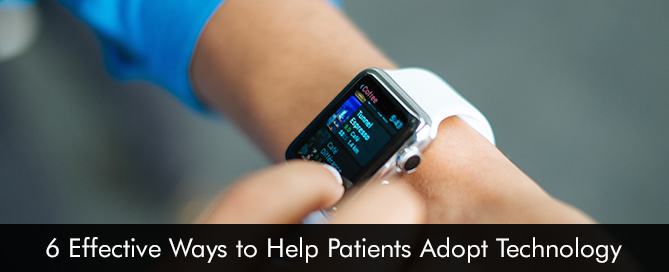Modern patient-care related technologies such as Electronic Medical Records (EMR) Software, Patient Portals, Telemedicine, and some hardware devices are intended to provide the patients with greater control over their treatment procedures, or their health in general. All such healthcare systems allow enhanced access to the medical data, which in turns makes the delivery of care more convenient and less costly.
Keeping all of this under consideration, the normal reaction for medical practices would be to expect more and more patients to start using all such Electronic Health Records (EHR) Software. Although what really happens is quite the opposite. Patients are usually hesitant when it comes to trusting technology with their healthcare.
The advantages of patient-care technologies for physicians are extraordinary and a slow patient adoption rate can be an exasperating problem. If your clinic is facing any such challenge, here are a few steps you can take to bridge the gap between patients and technology.
Multi-Channel Learning
The first step of making patients comfortable with whatever technology you’re using is to educate them about it. For the teaching and learning process, make sure you use a variety of communication tactics. E-mails, online articles, webinars, and in-person conversational learning are best in this regard.
Patient Concerns and Risks
One of the major reasons driving patients away from the use of technology is that they are uncertain about what could go wrong with it and how adverse it could be for them. Make them aware of all the risks healthcare technology poses and make them trust these EMR/EHR or Medical Billing Software. It makes complete sense to get their concerns on the table and work through them mutually.
Personalized Experience
Making all the conversation around patient-care technology personalized helps patients get a feeling of trust and confidence. For example, it may be one thing to say that video appointments can be convenient for patients. But on the other hand, saying “John, we can do a better job of maintaining your prescriptions, by doing your med-checks via a video-conversation.”
Ease-of-Access
Before physicians introduce any technology in their healthcare practice, they need to think of how convenient it will be for the majority of their patients to access. The most beneficial Health IT applications have an intuitive user interface that is similar to other applications the patients already like, and find comfortable using,
Slow Transition
Some of the patients might be excited enough to conduct their very next appointment remotely, while others might take a longer time adjusting to this feature. Some of these late-adopters, although, may be open to getting appointment reminders via SMS messages or email. Thus, using the “toe in the water” approach can work wonders in improving patient technology adoption.
Consistent Approach
Technology adoption is a slow process and hence demands consistent effort on the part of the provider. Thus, it makes sense to form a constant flow of communication so that your message might get to someone at just the right time.








